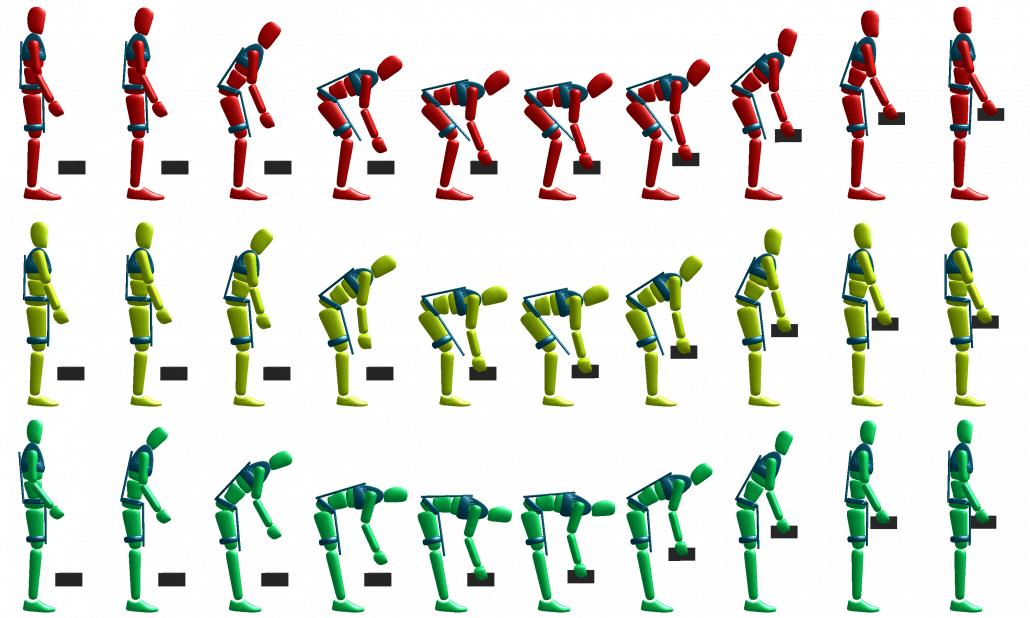Design optimization for active spinal exoskeleton
Researchers at UHEI performed various optimization studies on the design of active spinal exoskeletons for the support of lifting motions which serve as an input for the upcoming work in the project.
- For an exoskeleton model with rigid segments and motors at the hip and lumbar joints, we determined motions and corresponding human and exoskeleton torques that correspond to the smallest effort for the human, also respecting limits on the actuators.
- For an exoskeleton model with rigid segments and motors with parallel springs at the hip and lumbar joints, we reconstructed recorded individual lifting motions of different subjects without exoskeletons. Various objective functions were evaluated that lead to different distributions of the dynamic efforts between the muscular torques of the human and the passive and active torques of the exoskeleton. Contact forces between the human and exoskeleton were limited to ergonomically reasonable values.
- We also considered an exoskeleton model with a flexible beam element in the back and springs in the hip joint, corresponding to the current passive SPEXOR prototype. In addition to these passive elements, parallel actuators in the hip joints have been considered. The results show potential reductions in the human torques by the introduction of the active components.





